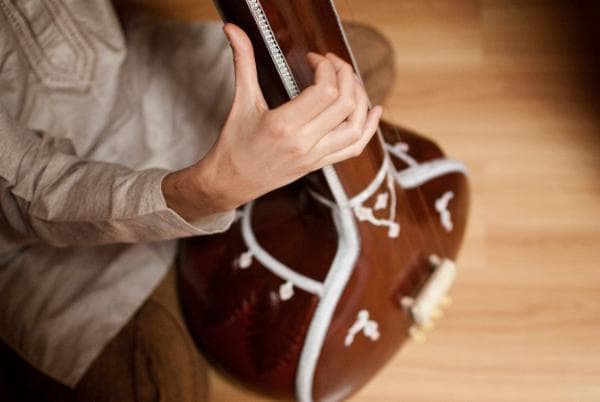
EN: Intro to North Indian Vocals and Rāga (Group clases)
1 module
English
Lifetime access
Overview
Note: Live sessions are available in October at the Queensborough Community Centre. I will post these soon.
Learn the basic concept of North Indian classical vocals (Hindustani) as well as vocal techniques from the ancient Dhrupad tradition. There are 16 live and interactive classes of an hour each. Each class will be recorded and available for viewing.
Part 1
- Sargam (Indian notes), the origin of Indian music, use of a tanpura
- Alankār- (patterns) with notes and ākār, and Sa Sādhana
- Swar Mapping
- 2 Bhajans with notes: "Ganesha Sharanam" and "Om Shivāya"
- Differences between western and Indian vocal techniques and style
- Vocal exercises based in speech therapy
Part 2
- Alankārs - patterns in 2 speeds
- High and low notes (Mandra y Tār) and kharaj
- Bhajan - Sathyam Jnanam Anantam
- Guru Sloka
- Tāl (rhythm), bols for Bhajani and Keherwar
- How to spark the divinity in the songs
Part 3
- What is a raga? Thāt, navarasa (9 emotions), timings, gharānās, and history
- Structure of a Raga - Aroha, Avorha, Vādi, Samvadi, Stayi, Antara, Alāp, Tāns
- Bandish (composition) in Raga Bhupali
- Teental (16 count rhythm)
- Ragas for healing
Criteria: No previous experience necessary
Commitment: 16 classes lasting 1 hour. All classes are recorded.
Dates: TBD
Time: (PST - Vancouver, Canada)
Modules
Live Class for Indian Vocals
Rate this Course
$ 320.00
Order ID:
This course is in your library
What are you waiting for? It’s time to start learning!

Wait up!
We see you’re already enrolled in this course till Lifetime. Do you still wish to enroll again?
